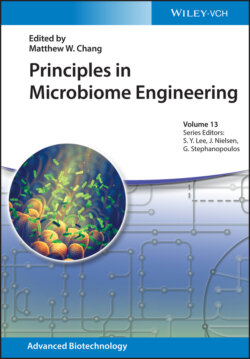Читать книгу Principles in Microbiome Engineering - Группа авторов - Страница 27
1.2.1.2 Soluble Saccharides
ОглавлениеSoluble saccharides can be divided into simple saccharides (glucose, fructose) and complex polysaccharides (starch), where these sugars provide the energy to the cells. Overconsumption of these sugars is often attributed to various health problems such as obesity, diabetes, cardiovascular disease, liver disease, and tooth decay [74–76]. The presence of high dietary simple sugar content (glucose and fructose) influences the primary metabolism in gut microbial by upregulating sugar transport proteins to increase cellular uptake of the sugar. Similarly, secondary metabolic pathways expressing polysaccharide utilization genes are suppressed in the presence of simple sugars [77]. This phenomenon is commonly observed in Bacteroides thetaiotaomicron that maintain the microbes in their planktonic lifestyle and inhibiting microbial colonization [78]. The suppressed genes include those involved in bacteria biofilms [79] and upregulate genes involved in chemotaxis [80]. The chemotaxis genes include flagella formation that can stimulate the host immune system through interaction with TLR5, as seen on the pathogenesis of the opportunistic pathogen Burkholderia cenocepacia infecting the host [81]. The effects of soluble sugar in the human gut microbiota is summarized in Table 1.2.
Table 1.2 Effects of natural and artificial sugar on gut microbiota.
| Bifidobacteria | Bacteroides | Clostridia | Lactobacilli | References | |
|---|---|---|---|---|---|
| Glucose | ↑ | ↓ | [82, 83] | ||
| Fructose | ↑ | ↓ | [82, 83] | ||
| Sucrose | ↑ | ↓ | [82, 83] | ||
| Lactose | ↑ | ↓ | ↓ | ↑ | [84] |
| Artificial sweeteners | ↓ | ↑ | ↓ | ↓ | [85] |
Source: Based on Hanuszkiewicz et al. [81].
